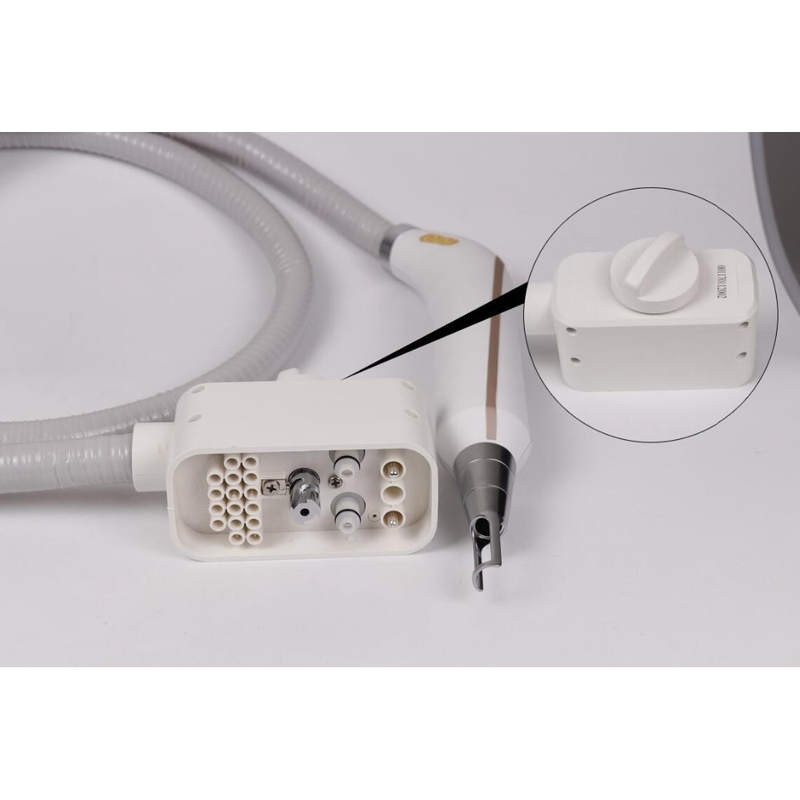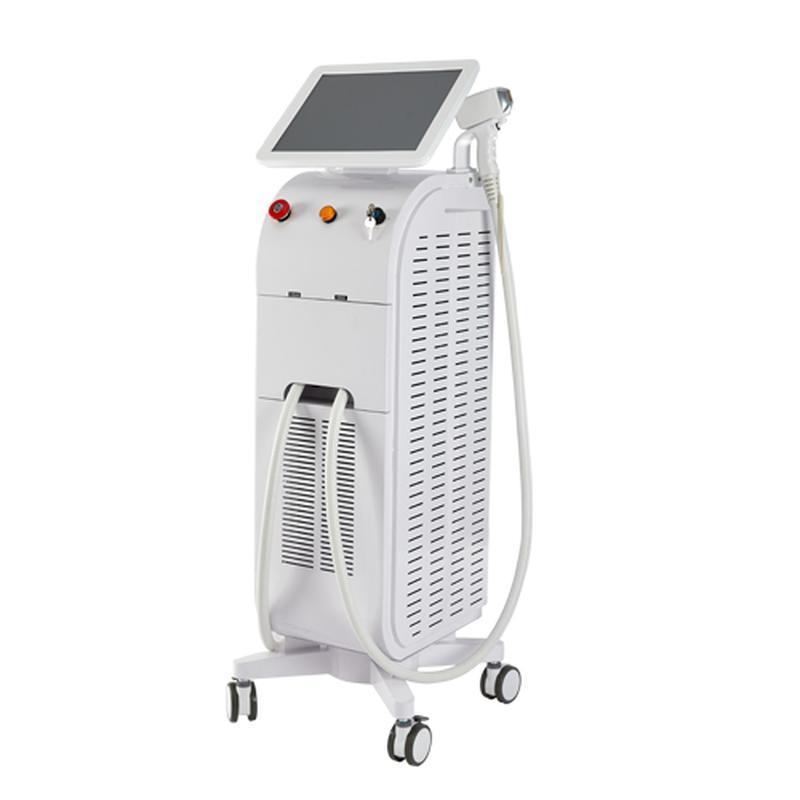La eliminación de tatuajes es un proceso complejo que requiere una consideración y planificación cuidadosas. Al comprender la tecnología, los beneficios y los riesgos involucrados, las personas pueden tomar decisiones informadas sobre su tratamiento. Con la guía adecuada y los cuidados posteriores, la eliminación de tatuajes puede ser una forma segura y efectiva de eliminar tatuajes no deseados y mejorar la apariencia de la piel. Siguiendo los consejos y pautas descritos en este artículo, las personas pueden lograr resultados óptimos y disfrutar de una vida más confiada y despreocupada.
Tratamiento de eliminación de tatuajes: Una guía completa
La eliminación de tatuajes se ha convertido en un procedimiento cada vez más popular en los últimos años, impulsado por el creciente número de personas que buscan borrar tatuajes no deseados. El proceso implica descomponer el pigmento del tatuaje utilizando tecnología láser avanzada, lo que permite que el cuerpo absorba y elimine la tinta. Con los avances en la tecnología médica, la eliminación de tatuajes se ha vuelto más segura y efectiva. Según un estudio publicado en la Revista de Dermatología Clínica y Estética, la demanda de eliminación de tatuajes ha aumentado significativamente en la última década, lo que destaca la necesidad de información completa sobre el tema.
Entendiendo la eliminación de tatuajes
La eliminación de tatuajes es un proceso complejo que requiere una comprensión profunda de la tecnología y las técnicas involucradas. El método más común de eliminación de tatuajes es la eliminación de tatuajes con láser, que utiliza haces de luz de alta intensidad para descomponer la tinta del tatuaje.
Cómo funciona la eliminación de tatuajes con láser
El proceso de eliminación de tatuajes con láser implica el uso de un láser Q-switched que emite pulsos de luz a longitudes de onda específicas para apuntar a la tinta del tatuaje. La energía del láser es absorbida por la tinta, lo que hace que se descomponga en partículas más pequeñas que luego son absorbidas por el sistema inmunológico del cuerpo.
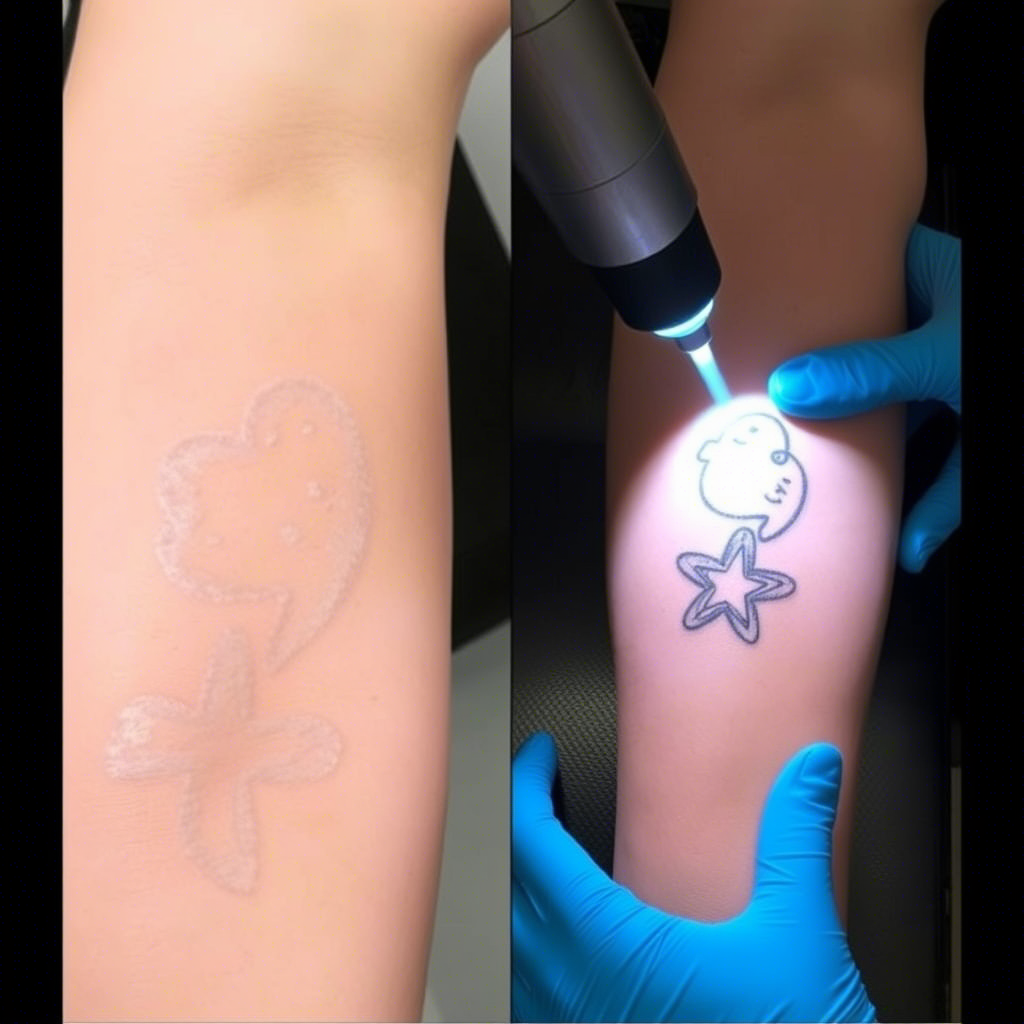
La efectividad de la eliminación de tatuajes con láser depende de varios factores, incluyendo el tipo de láser utilizado, el color y la profundidad de la tinta del tatuaje, y el tipo de piel del individuo.
Factores que afectan la eliminación de tatuajes
Varios factores pueden influir en el éxito de la eliminación de tatuajes, incluyendo el tamaño y la ubicación del tatuaje, el tipo de tinta utilizada, y el tono de piel del individuo. Por ejemplo, los tatuajes con tinta negra tienden a responder mejor a la eliminación con láser que aquellos con tinta de colores. Un estudio publicado en la Revista de Dermatología Investigativa encontró que la longitud de onda del láser utilizado puede tener un impacto significativo en la efectividad de la eliminación de tatuajes.
Preparación para la eliminación de tatuajes
Antes de someterse a la eliminación de tatuajes, es esencial preparar la piel y comprender el proceso de tratamiento. Esto puede implicar evitar la exposición al sol, suspender ciertos medicamentos, y seguir una rutina de cuidado de la piel previa al tratamiento. Para obtener más información sobre cómo prepararse para la eliminación de tatuajes, puede visitar https://www.mbs-med.com/.
El proceso de eliminación de tatuajes
El proceso de eliminación de tatuajes generalmente implica múltiples sesiones, espaciadas varias semanas entre sí. Durante cada sesión, se aplica el láser en el área del tatuaje, y el paciente puede experimentar cierta incomodidad.
Qué esperar durante el tratamiento
Durante el tratamiento, el láser se ajusta según el tipo de piel del individuo y las características del tatuaje. El paciente puede sentir una sensación de pinchazo, y el área tratada puede volverse roja e hinchada.
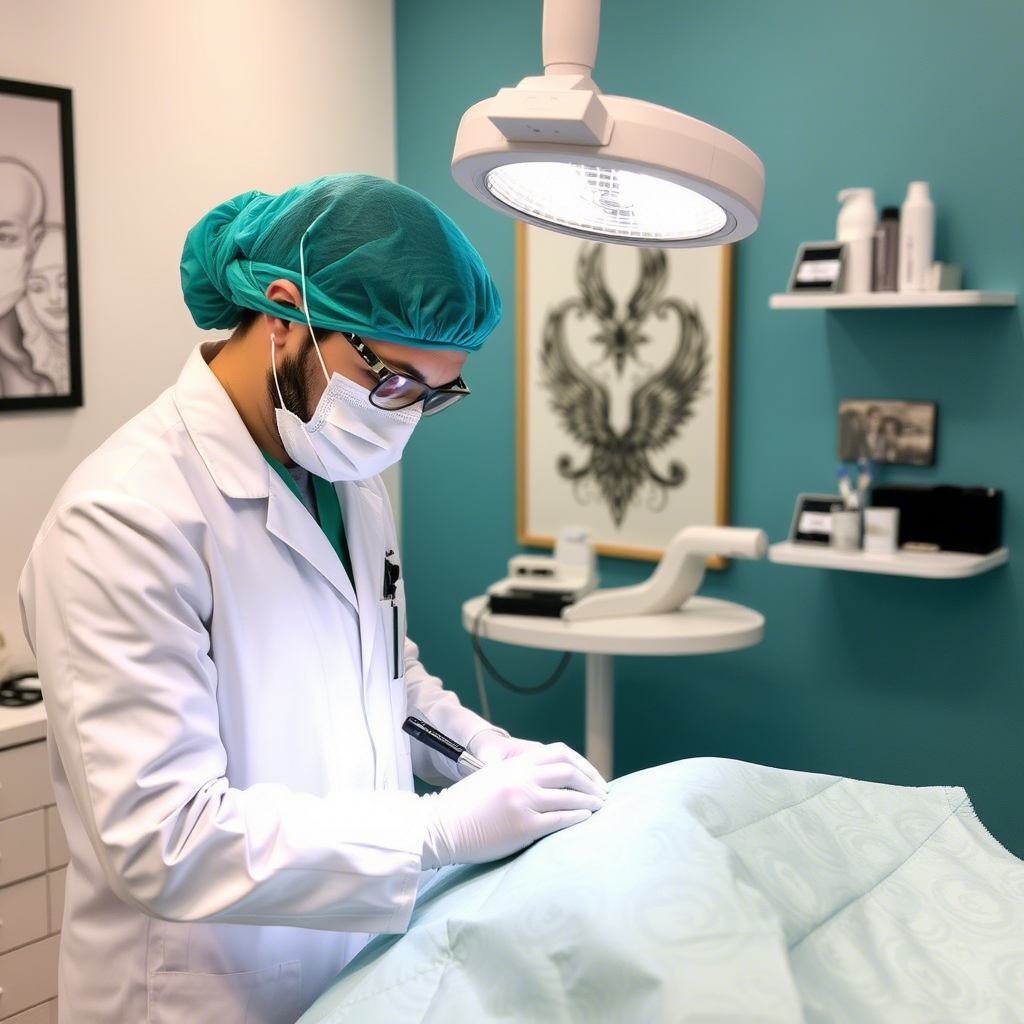
La duración del tratamiento depende del tamaño y la complejidad del tatuaje.
Cuidado posterior al tratamiento
Después del tratamiento, es crucial seguir una rutina de cuidado posterior adecuada para minimizar el riesgo de complicaciones y promover la curación. Esto puede incluir aplicar cremas tópicas, evitar la exposición directa al sol, y mantener el área tratada limpia. Para obtener más orientación sobre el cuidado posterior al tratamiento, considere consultar a un profesional en una clínica de buena reputación.
Beneficios y riesgos de la eliminación de tatuajes
La eliminación de tatuajes ofrece varios beneficios, incluyendo la capacidad de borrar tatuajes no deseados y mejorar la apariencia de la piel. Sin embargo, también conlleva algunos riesgos, como irritación de la piel y cicatrices.
Ventajas de la eliminación de tatuajes
La eliminación de tatuajes puede mejorar significativamente la calidad de vida de un individuo, especialmente para aquellos que tienen tatuajes que ya no desean. El procedimiento también puede ayudar a aumentar la confianza en uno mismo y la autoestima.
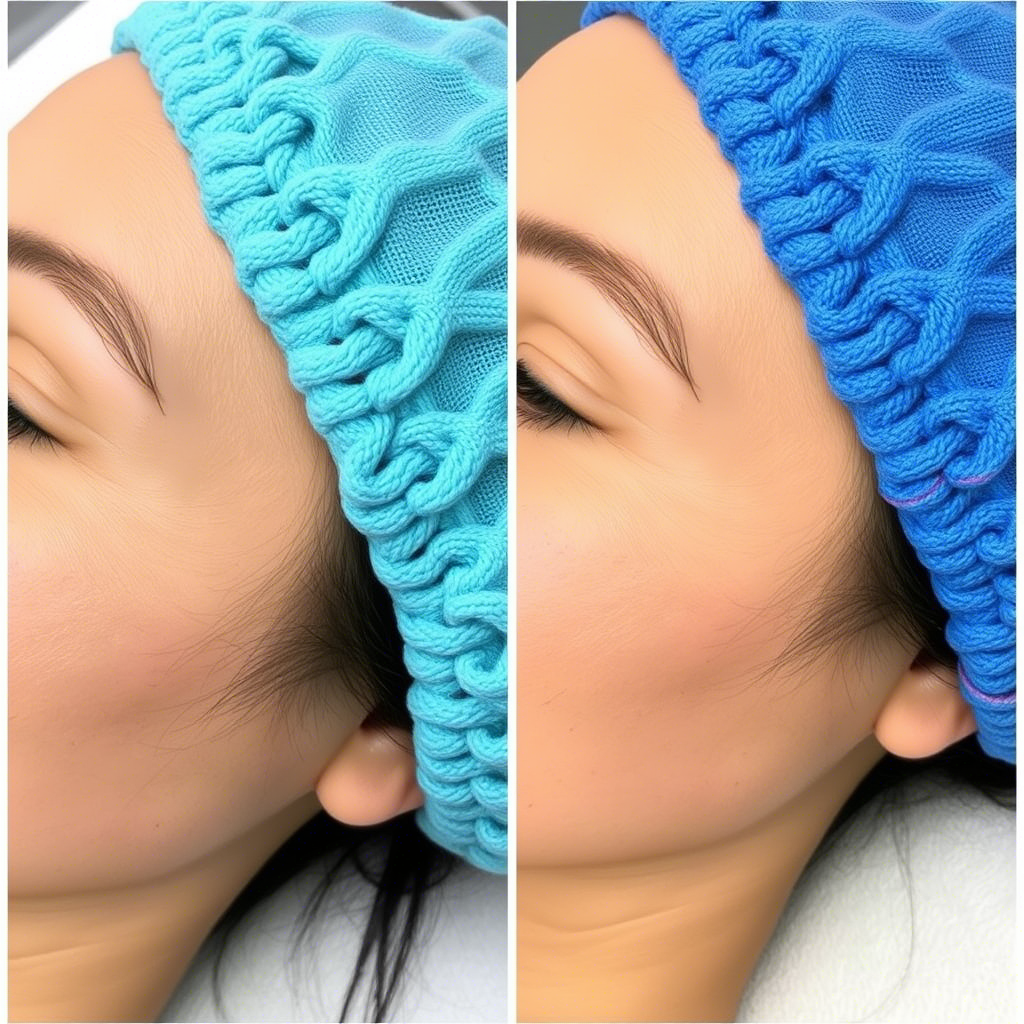
Una eliminación de tatuajes exitosa puede resultar en mejoras estéticas significativas.
Riesgos y complicaciones potenciales
Si bien generalmente se considera seguro, la eliminación de tatuajes puede resultar en complicaciones, como infección, cicatrices, y cambios en la pigmentación de la piel. Es esencial estar al tanto de estos riesgos y tomar medidas para minimizarlos. Para obtener más información sobre los riesgos asociados con la eliminación de tatuajes, puede visitar sitios web médicos de buena reputación, como https://www.medicalnewstoday.com/.
Costo y consideraciones de seguro
El costo de la eliminación de tatuajes puede variar significativamente dependiendo de varios factores, incluyendo el tamaño y la ubicación del tatuaje, el número de sesiones necesarias, y la experiencia del profesional.
Factores que influyen en el costo
El costo de la eliminación de tatuajes está influenciado por la complejidad del procedimiento, la tecnología utilizada, y las calificaciones del profesional. Es esencial consultar con un profesional calificado para obtener una estimación precisa de los costos involucrados.
Cobertura de seguro
En la mayoría de los casos, la eliminación de tatuajes se considera un procedimiento cosmético y no está cubierto por el seguro. Sin embargo, puede haber excepciones para los tatuajes que se consideran médicamente necesarios, como aquellos que están causando angustia física o emocional.
Cuidado posterior y mantenimiento
El cuidado posterior y el mantenimiento adecuados son cruciales para obtener resultados óptimos y minimizar el riesgo de complicaciones.
Cuidado de la piel después de la eliminación
Después de la eliminación de tatuajes, es esencial seguir una rutina de cuidado de la piel suave para promover la curación y minimizar el riesgo de complicaciones. Esto puede incluir el uso de limpiadores y humectantes suaves, y evitar productos agresivos.
Sesiones de seguimiento
Pueden ser necesarias sesiones de seguimiento para lograr resultados óptimos. El número de sesiones necesarias dependerá del tipo de piel del individuo, el tamaño y la complejidad del tatuaje, y la efectividad del tratamiento.
Conclusión
La eliminación de tatuajes es un proceso complejo que requiere una consideración y planificación cuidadosas. Al comprender la tecnología, los beneficios y los riesgos involucrados, las personas pueden tomar decisiones informadas sobre su tratamiento. Con la guía adecuada y el cuidado posterior, la eliminación de tatuajes puede ser una forma segura y efectiva de borrar tatuajes no deseados y mejorar la apariencia de la piel. Al seguir los consejos y las pautas descritos en este artículo, las personas pueden lograr resultados óptimos y disfrutar de una vida más confiada y despreocupada.

